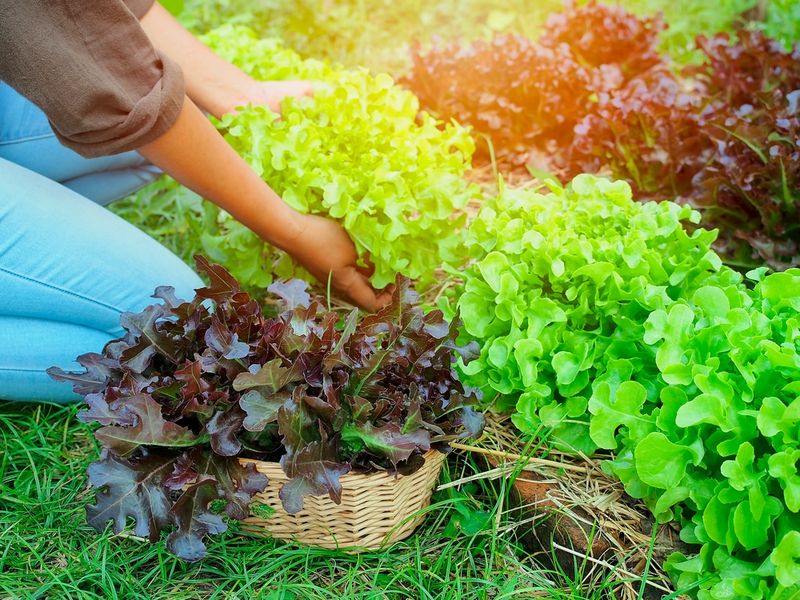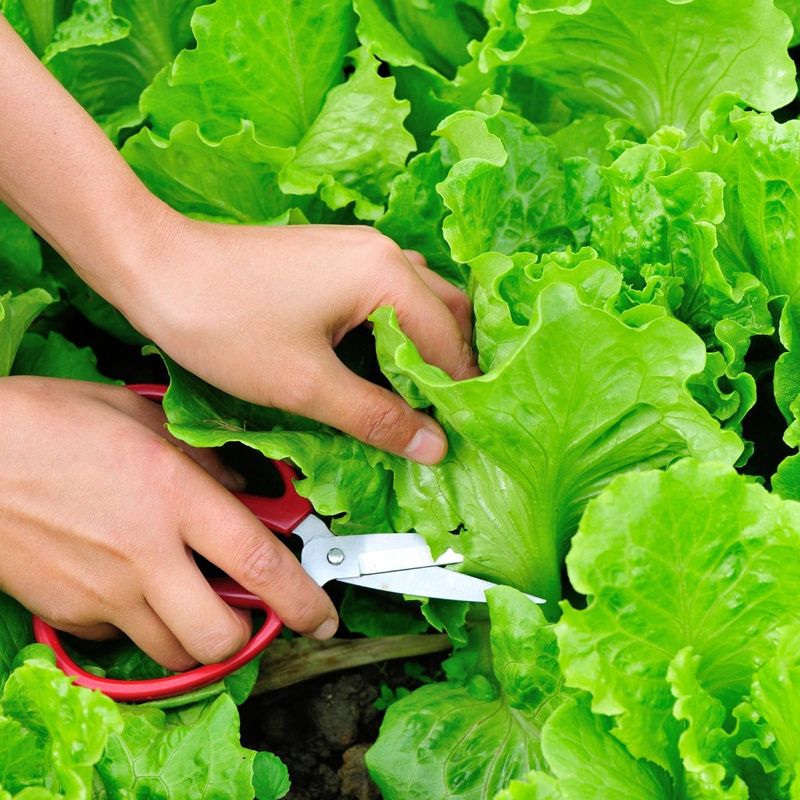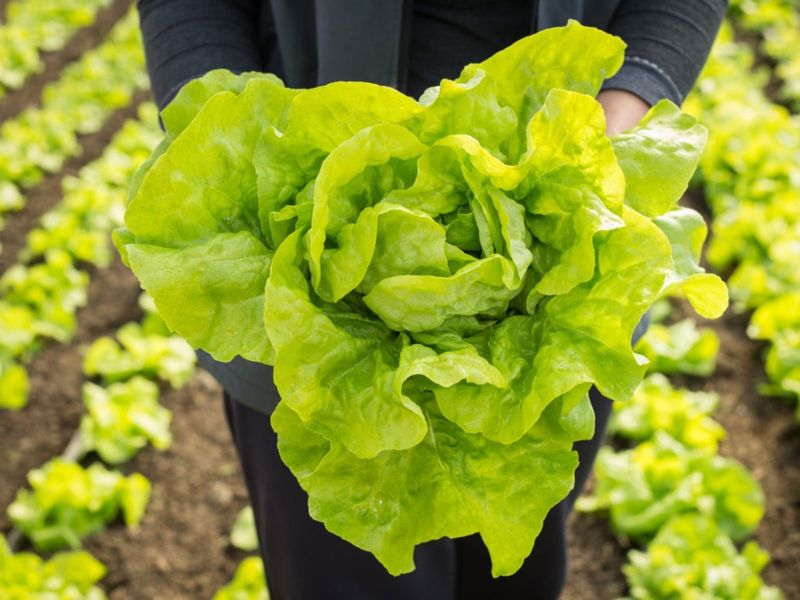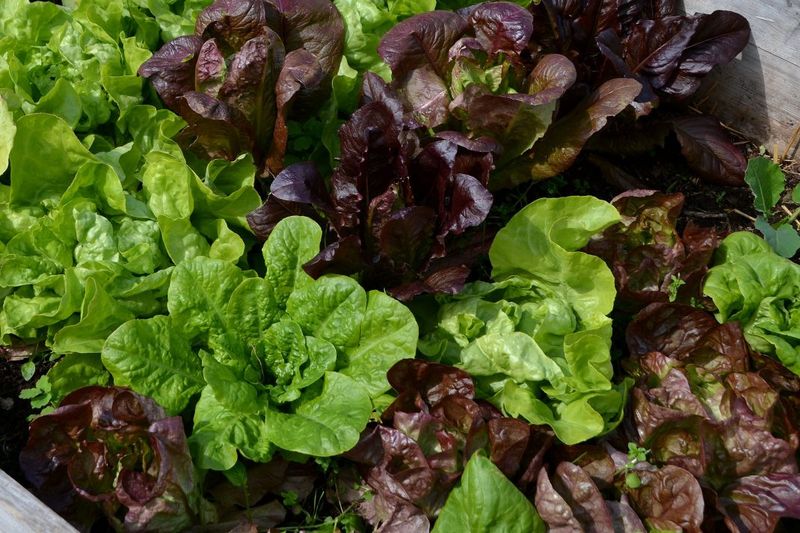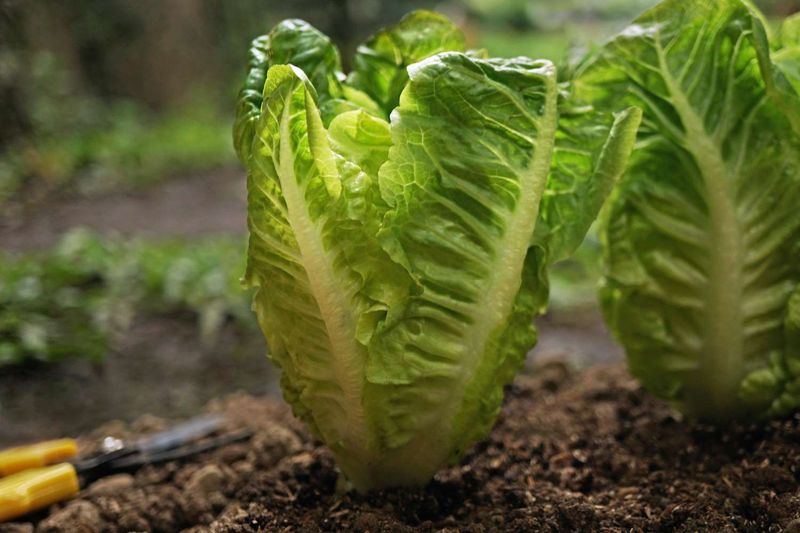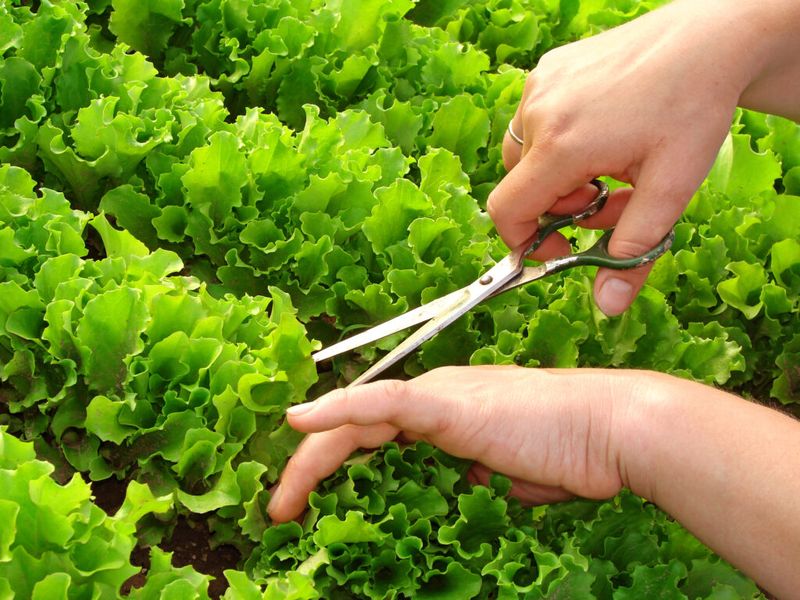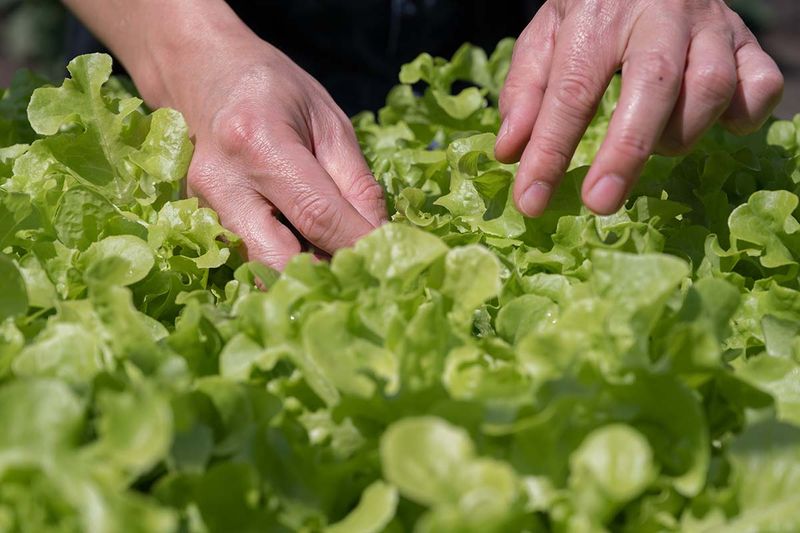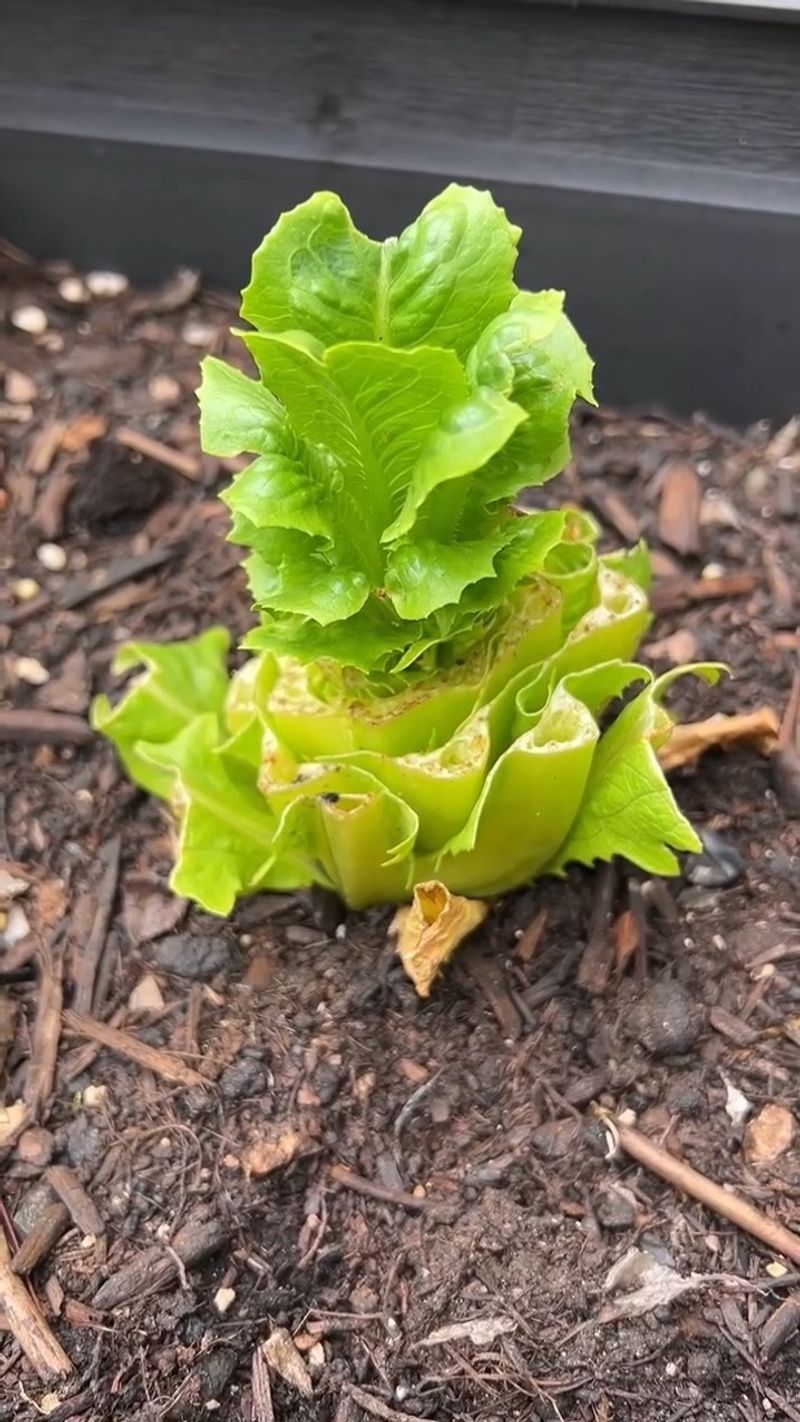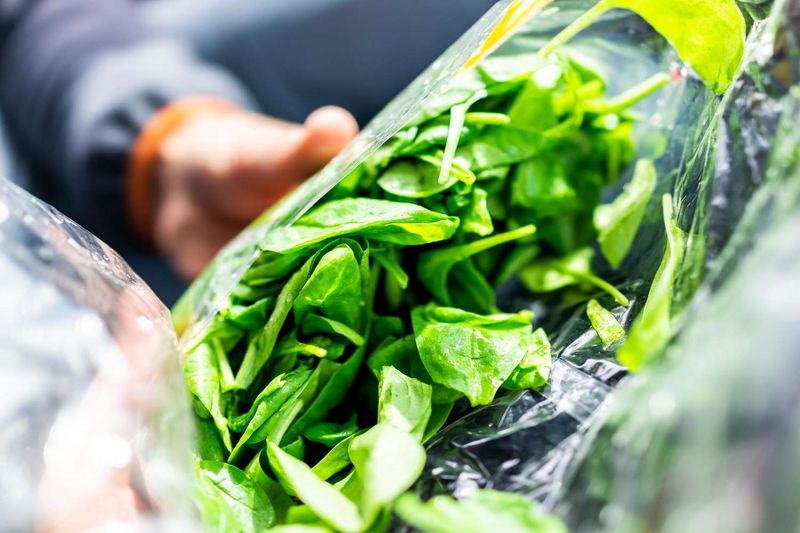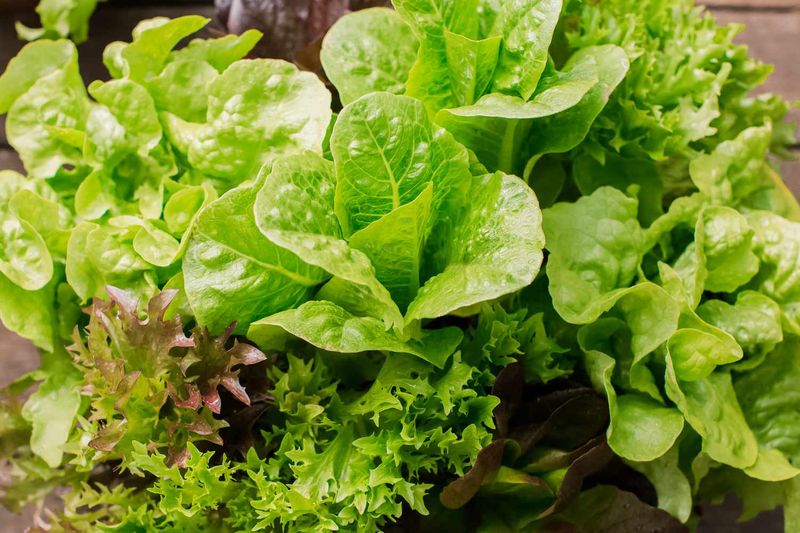Growing your own lettuce is such a satisfying part of gardening—there’s nothing like stepping outside and picking your own fresh greens.
But I’ve learned the hard way that timing is everything when it comes to taste. Miss that perfect window, and you end up with bitter leaves or lettuce that bolts seemingly overnight. It’s frustrating, especially after weeks of care.
With a few easy tips and a bit of observation, you can catch your lettuce at just the right time and enjoy crisp, delicious salads straight from the garden.
1. Morning Harvest Magic
The early bird catches the best lettuce! Heading out to your garden before the sun gets too high gives you lettuce at its prime. Morning harvests mean the leaves are fully hydrated and at their crispest after recovering overnight.
I’ve found my lettuce stays fresh longer when picked before 9 AM. The cooler temperatures help preserve that satisfying crunch we all love in our salads.
Keep a small basket and scissors near your garden door as a reminder to snip some leaves while enjoying your morning coffee. This simple habit ensures you’re getting the most flavorful harvest possible.
2. Outer Leaves First
The outer leaves of lettuce plants mature first while the center continues growing. By taking just these exterior leaves, you’re essentially getting free lettuce while the plant keeps producing from the middle.
My neighbor taught me this trick years ago, and it’s doubled my harvest from the same number of plants. Grab the lowest, outermost leaves about an inch above the soil line and snip them cleanly.
This approach works especially well with loose-leaf varieties. The plant will continue producing new center growth for weeks longer than if you’d harvested the whole head at once.
3. The Two-Finger Test
Checking lettuce firmness gives you a quick way to judge readiness without damaging the plant. Gently press the lettuce head with two fingers – it should feel solid but have a slight give, similar to a ripe avocado.
Too soft means the lettuce isn’t ready yet; too firm suggests it might be starting to bolt. When testing butterhead or romaine varieties, the center should feel dense but not rock-hard.
My garden journal notes show that most lettuce varieties reach this perfect firmness about 55-70 days after planting, depending on weather conditions. This simple touch test has saved me from harvesting too early or too late.
4. Size Matters
Baby lettuce offers the most tender eating experience, while full-sized heads give you more bang for your buck. For baby lettuce, harvest when leaves reach 3-4 inches tall. The smaller size means milder flavor and buttery texture that’s perfect for gourmet salads.
Full-sized heads should reach about 6-8 inches in diameter before harvesting. I’ve found that waiting until heads are fully mature but not overgrown gives the best balance of yield and flavor.
Keep a small ruler in your garden toolkit to check leaf sizes when you’re just starting out. After a season or two, you’ll develop an eye for the perfect harvesting size without needing to measure.
5. Watch For Bolting Signs
Once lettuce starts bolting, the leaves turn bitter quickly. The center stem beginning to elongate is your first warning sign – it’s trying to flower! At this point, harvest the entire plant immediately, even if it seems a bit small.
Last summer, I missed the early bolting signs on my romaine and ended up with lettuce too bitter to enjoy. Now I check my plants every other day during warm weather spells.
Another telltale sign is when the leaves start pointing more upward instead of growing in their usual pattern. This vertical growth indicates the plant is shifting energy from leaf production to seed production.
6. The Taste Test
Sometimes the simplest methods work best. Snipping a small outer leaf and tasting it right in the garden tells you everything you need to know about harvest timing. Fresh lettuce should taste sweet and mild with just a hint of green flavor.
When I’m unsure about a variety’s readiness, I sample leaves from different plants. Bitterness means you should harvest immediately before it gets worse. Some varieties naturally have more bite than others, so get familiar with your specific lettuce types.
Keep in mind that morning-harvested lettuce typically tastes sweeter than afternoon-picked leaves from the same plant. This simple taste-testing habit helps you develop a feel for perfect timing.
7. Cut-And-Come-Again Method
Instead of pulling entire plants, try harvesting just what you need for today’s meals. Using clean, sharp scissors, cut leaves about an inch above the soil line, leaving the growing point intact.
The plants will regrow surprisingly quickly. My small patch of mixed greens feeds my family three times using this method before I need to replant. Make sure to water well after harvesting to encourage rapid regrowth.
This approach works especially well with leaf lettuce varieties rather than heading types. It’s perfect for small gardens where space is limited and you want to maximize your harvest from fewer plants.
8. Weather-Watching Wisdom
Hot weather speeds up bolting, so adjust your harvest schedule during warm spells. When temperatures climb above 80°F, harvest lettuce earlier than you normally would, even if it seems slightly immature.
After losing half my crop during an unexpected heat wave last year, I now check the weekly forecast religiously. If hot days are coming, I harvest everything that’s close to ready rather than waiting for perfect maturity.
During cooler periods, you can let plants grow longer for maximum yield. Spring and fall crops generally have wider harvest windows than summer plantings, giving you more flexibility with timing.
9. Harvest Before Rain
Heavy rainfall can damage delicate lettuce leaves and splash soil onto your clean greens. The moisture also makes leaves more susceptible to rot and fungal issues if not harvested promptly.
When rain is in the forecast, I head out to collect what’s ready. Wet lettuce leaves tear more easily and don’t store as well as those harvested in drier conditions.
If you must harvest after rain, wait until the leaves have dried completely. Shake each plant gently before cutting to remove excess water droplets. This extra step prevents soggy salads and helps your harvest stay crisp longer in the refrigerator.
10. Color As A Ripeness Indicator
The vibrant hues of your lettuce varieties can tell you a lot about harvest timing. Most varieties reach their characteristic color at peak maturity – romaine shows deep green, butterhead develops its buttery yellow centers, and red leaf varieties display their richest coloration.
Faded or dull colors often signal overmaturity or stress. My red-speckled lettuce shows its most beautiful pattern about three days before it starts getting bitter, giving me a perfect visual cue.
Take photos of your lettuce at different stages to create a personal reference guide. After a few seasons, you’ll instinctively recognize the perfect color patterns that indicate prime harvesting time.
11. Succession Planting Strategy
Planting small batches of lettuce every two weeks prevents having too much ready at once. This staggered approach means you’ll always have some plants at the perfect harvest stage while others are still developing.
Mark each planting date with small plant tags or in your garden journal. I use different colored markers to track my succession plantings and note which varieties perform best in each part of the growing season.
This method also lets you experiment with harvesting the same variety at different maturity stages. You might discover you prefer certain types as baby greens while others taste better when fully mature.
12. Clean Cutting Technique
Using proper tools and technique extends your lettuce plants’ productive life. Sharp scissors or a clean knife makes clean cuts that heal quickly, allowing for continued growth.
Tearing or pulling leaves can damage the plant’s structure and create entry points for disease. I keep a pair of scissors specifically for harvesting, wiping them with alcohol between different plants to prevent spreading any potential issues.
Make your cuts at a slight angle rather than straight across. This small adjustment helps water run off the cut surface rather than pooling, which reduces the risk of rot at the cut site and encourages healthier regrowth.
13. Leaf Texture Clues
Running your fingers across lettuce leaves reveals a lot about readiness. Perfectly mature leaves feel crisp and firm but not tough or leathery. The texture should be consistent from the base to the tip of each leaf.
When leaves start developing a thicker, tougher texture, it’s often a sign they’re getting overmature. One spring I waited too long on my butterhead lettuce and the leaves developed an almost cardboard-like feel that wasn’t pleasant in salads.
For loose-leaf varieties, the newer center leaves should feel more delicate than outer leaves. This textural difference is natural and offers a nice variety in your salads when you harvest a mix of inner and outer leaves.
14. Root Preservation Harvesting
For certain varieties, harvesting the whole head while leaving the roots intact allows for a second growth. Cut the head about an inch above the soil line with a sharp knife, being careful not to disturb the root system.
Water thoroughly after cutting to encourage the plant to produce new leaves. Last season, I got a second smaller harvest from nearly 70% of my romaine plants using this method.
This approach works best in cooler weather when plants aren’t stressed. The second growth is usually smaller than the first but still provides enough for a few additional salads, essentially giving you free lettuce for minimal extra effort.
15. Refrigeration Test
Properly timed harvests stay crisp longer in your refrigerator. If you’re unsure whether your lettuce is at peak readiness, harvest a sample leaf and store it in the fridge overnight in a plastic bag with a damp paper towel.
Check it the next day – if it’s still firm and crisp, your timing is right. Leaves that quickly wilt or turn slimy were likely overmature when picked.
My garden club friends and I call this the “overnight test.” We’ve found that lettuce harvested at its sweet spot will generally maintain quality for 5-7 days in proper refrigeration, while overmature leaves might last only 2-3 days before declining.
16. Harvest Height Guide
Different lettuce varieties reach optimal harvest at specific heights. Loose-leaf types are generally ready when they reach 6-8 inches tall. Romaine should be about 6-10 inches before harvesting, while butterhead varieties typically mature at 4-6 inches in height.
Rather than trying to memorize all these numbers, I keep a small chart laminated and hanging near my garden tools. Height isn’t the only factor, but it provides a helpful starting point for judging readiness.
Remember that lettuce grown in shadier spots often grows taller but less dense than sun-grown lettuce. Adjust your height expectations based on your specific growing conditions for more accurate harvest timing.
17. Seed Packet Information
Those seed packets contain valuable harvest timing information that’s calibrated specifically for each variety. Most packets list days to maturity – typically between 45-75 days depending on the type of lettuce.
I mark my calendar based on planting dates plus the maturity window. For instance, when I planted ‘Buttercrunch’ with its 60-day maturity, I highlighted dates 55-65 days out as my likely harvest window.
Keep in mind that these timeframes assume optimal growing conditions. Cooler weather extends the growing period, while heat shortens it. Adjusting these baseline numbers based on your actual growing conditions helps fine-tune your harvest timing.


